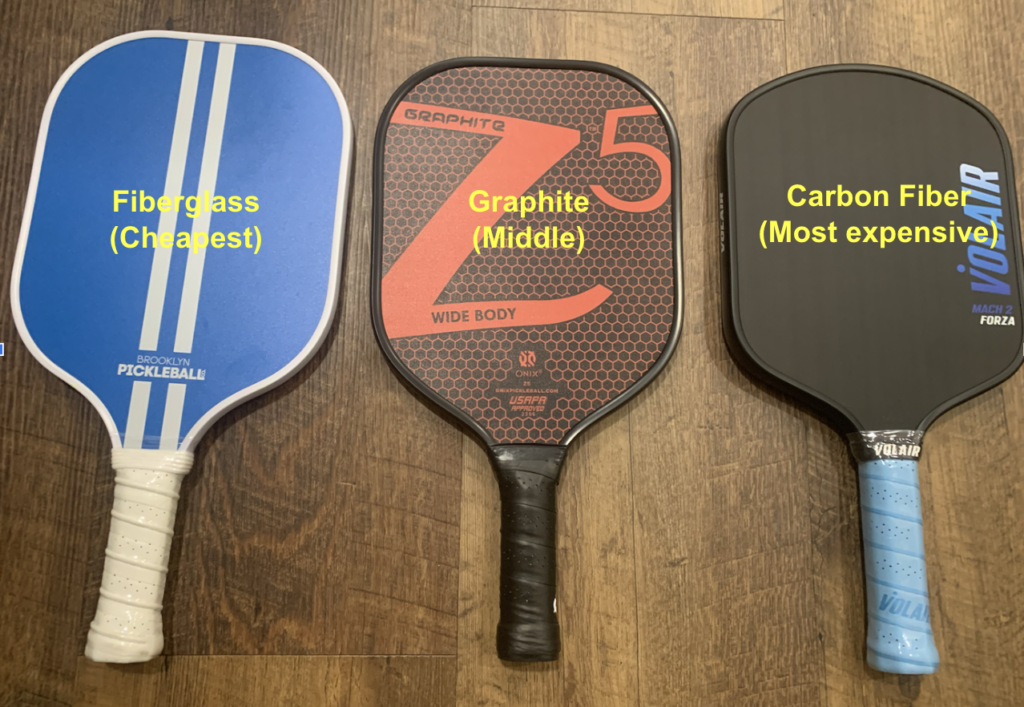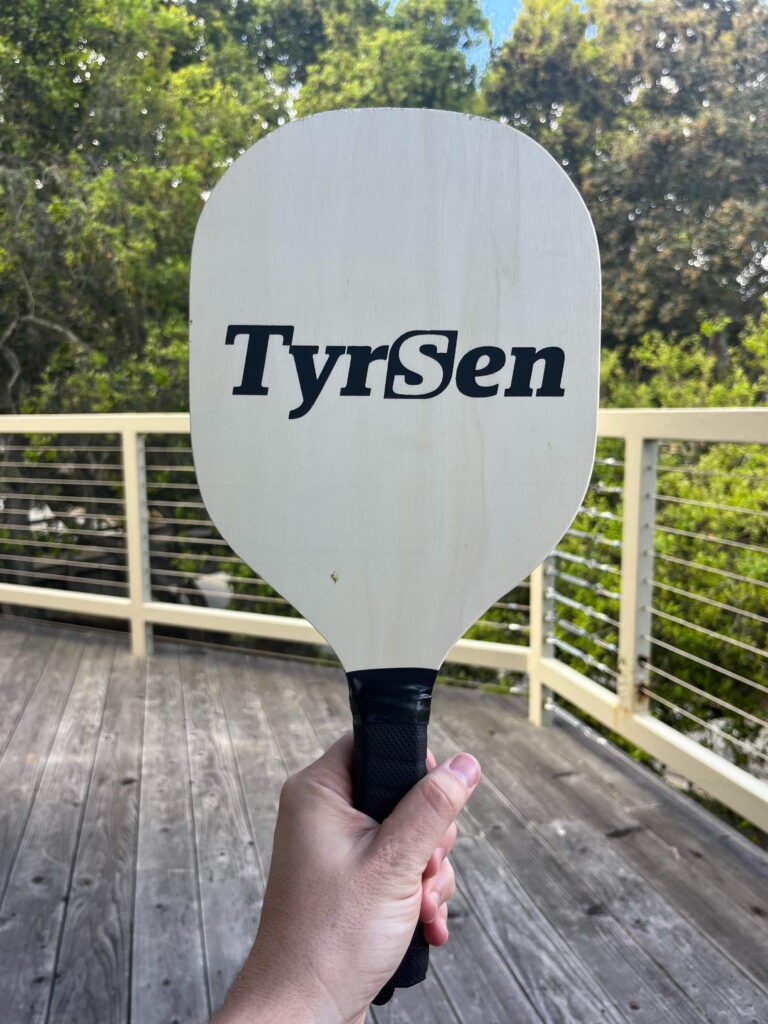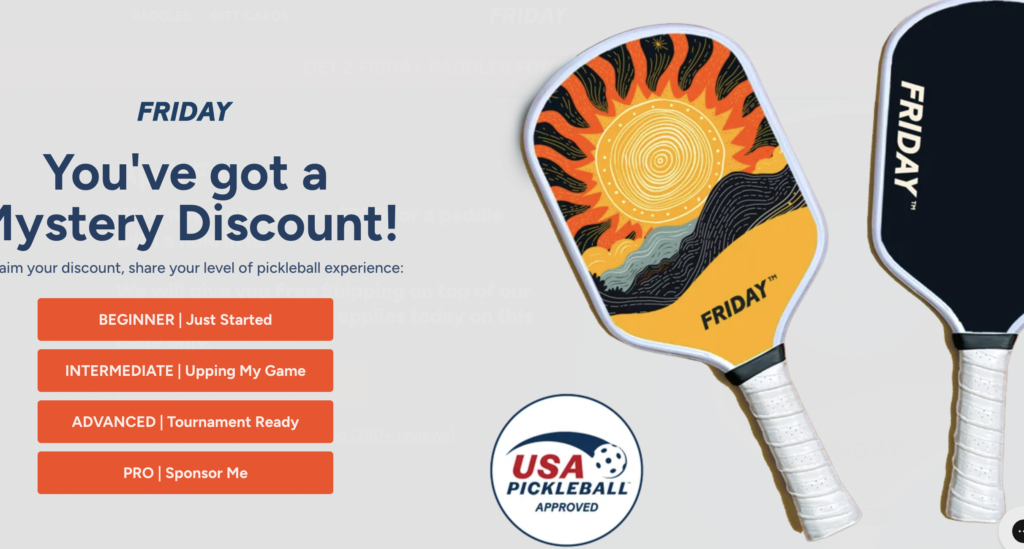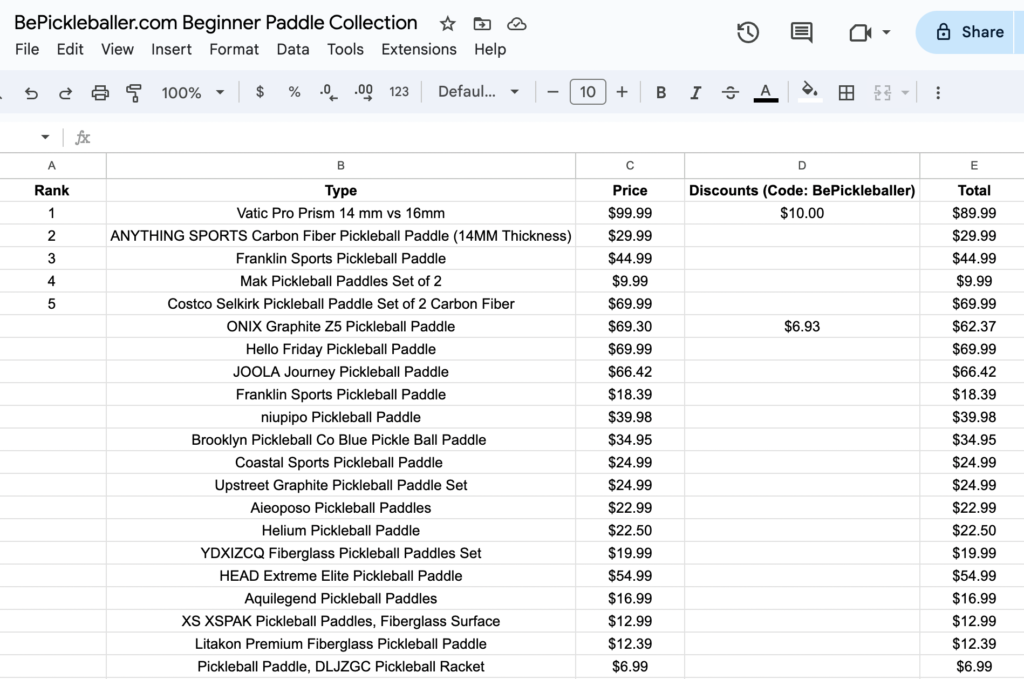Have you ever wonder just WHY pickleball paddles are so expensive? It’s just a piece of plastic, right?
I am obsessed with pickleball paddles research (i.e. I own 25-50 pickleball paddles), and it turns out there is a whole lot more than that when it comes to pickleball paddles, including an array of different materials, technology, features, and of course, brands!
All of these components can add up, meaning that a top-end paddle can cost over $300.
That said, I will share some affordable, awesome pickleball paddles that I love.
That said, if you’ve truly engaged with the sport, you will soon realize that these budged-focused paddles will only get you so far, and the more you play and figure out your playing style, you will want to optimize your game further and choose a weapon which has features most suited to your game.
Keep reading to learn more about the factors that includes the price of a pickleball paddle, as well as how they can affect performance and durability.
1. Materials
First of all, let’s talk about the best materials for pickleball paddles.
Pickleball paddles can be made from various materials, ranging from wood (which is a cheap but less durable material) to carbon fiber, which is much more expensive (they make planes out of this stuff, so it’s no surprise!). Here are a few pictures of my paddles to help.

I didn’t add a wood paddle to the above as it’s quite rare, but here’s a picture if you’d like to see what a wooden paddle looks like.

Then, somewhere in the middle, you have materials such as composite, which offer a balance of price and performance.
Generally speaking, higher-quality materials provide better performance and longevity than cheaper materials, such as offering better spin, power, etc. That said, you can still find carbon fiber paddles at a discounted rate by using discount codes or finding hidden nuggets. One of the best beginner paddles was an inexpensive carbon fiber paddle under $50.
However, these features come at a price and may not be suited to one’s game, so it’s best to do your research and choose wisely.
2. Branding & Marketing
Imagine if Nike starting making pickleball paddles, can you imagine the hype and sales they would be pulling in?
Well the pickleball industry also has it’s own brands which generate a lot of hype, primarily through sponsoring the best players.
Let’s take Joola for example; the world number one player Ben Johns using Joola equipment, and you can find their logo everywhere in the pickleball world, including social media and at events; I think at all tournaments I’ve played at there has been a Joola represnetaitve, so these guys really have the resources to put themselves out there, and as expected they can ramp up their prices because of this.
Does this mean that Joola makes the best paddles? Well, that’s up for debate!
We know their paddles are made from the best materials, but that doesn’t necessarily mean that a Joola paddle is the best for you.
A Joola paddle might come in at $300, but you might find that the paddle that suits your style/level of play at $150, and that’s the power of marketing!
I have seen a lot of brand marketing around the Friday pickleball paddles, where the company heavily markets its “mystery discount.”

If you’re interested, check out the top 10 most expensive pickleball paddles in the world.
3. Technology
Now let’s talk about the technology that goes into a pickleball paddle.
As pickleball is growing so quickly, paddle manufacturers are now investing a lot of money into research and development and constantly working on new ways to improve their products.
This process involves testing new materials that may benefit aspects of the game, such as spin, control, and power.
For example, Joola’s third-generation pickleball paddles were recently banned because their technology generated excessive power, which could potentially change the fundamentals of the game.
Specific examples of these features include new face materials. Take the brand Six Zero, for example, which is making its paddles using Kevlar. It seems unusual, right? But these paddles are becoming increasingly popular (and expensive!).
Additionally, the brand Selkrik actually has a division called ‘Selkirk Labs,’ which is the independent research and development division of Selkirk Sport. It gives its members a chance to pilot and participate in the latest advancements in Pickleball paddle technology.
Can you Find Amazing Paddles That Are Not Expensive?
Yes, you can find great paddles that do not break the bank. Here’s a list of paddles I purchased in 2024 this year that did not break the bank. I used this list to help me choose the best budget pickleball paddles under $50. Just so you know, my budget favorite is the Vatic Pro Prism Flash 16MM, which you can purchase for $89.99 after using the discount code bepickleballer.
It continues to impress me, and is one of my main paddles with paddles in the range of $200.

While pickleball paddles can be expensive, you can find cheaper alternative, but is pickleball an expensive sport to play?
Let’s cover that next.
Is It Expensive to Play Pickleball?
Compared to other racket sports like Tennis, Pickleball is a relatively inexpensive sport.
The equipment required to play pickleball is minimal, as all you need is a paddle, a net, an outdoor ball and a flat surface.
Pickleball can be played indoors and outdoors, whether on a volleyball, tennis, badminton, or even a parking lot! For example, you could purchase a fantastic portable pickleball net for under $100 and the best outdoor pickleball balls for under $10
The biggest expense in Pickleball is the paddle. Depending on the factors previously mentioned, the price of a good paddle can vary greatly. That said, it does not mean that you have to spend a fortune on a paddle, especially if you’re starting out in your pickleball journey.
Are Expensive Paddles Worth It?
After reading about the cost of paddles, you might be wondering: “Are expensive paddles really worth it?”
The answer is… it depends.
For a beginner, balancing price and quality can be challenging. A pickleball paddle might look like an upgraded table tennis paddle, and to newbies, it might seem overpriced and not worth the investment.
As I have been playing more, I have appreciated my intermediate pickleball paddles are in the $100-$200 range as the paddles can provide much more control, spin and/or power.
However, more advanced players often better understand what they’re paying for. With more games under their belt and experience using different paddles, they will soon develop a preference and identify which paddle features are most suited to their game.
Ultimately, an expensive paddle is worth it if the player sees value in it—regardless of the price tag. If it enhances a player’s performance, then the investment is absolutely worthwhile.
Conclusion
Pickleball paddles are more than just rackets—they are carefully crafted tools that can significantly enhance your game. Their higher price is due to the use of premium materials, unique features, and branding factors.
Are they worth the investment? That depends on your budget, skill level, and personal preferences. However, in general, they are. A quality paddle can help you improve your skills and enhance your game enjoyment. Additionally, a well-made paddle typically lasts longer, performs better, and looks more appealing than a cheaper, lower-quality option.

